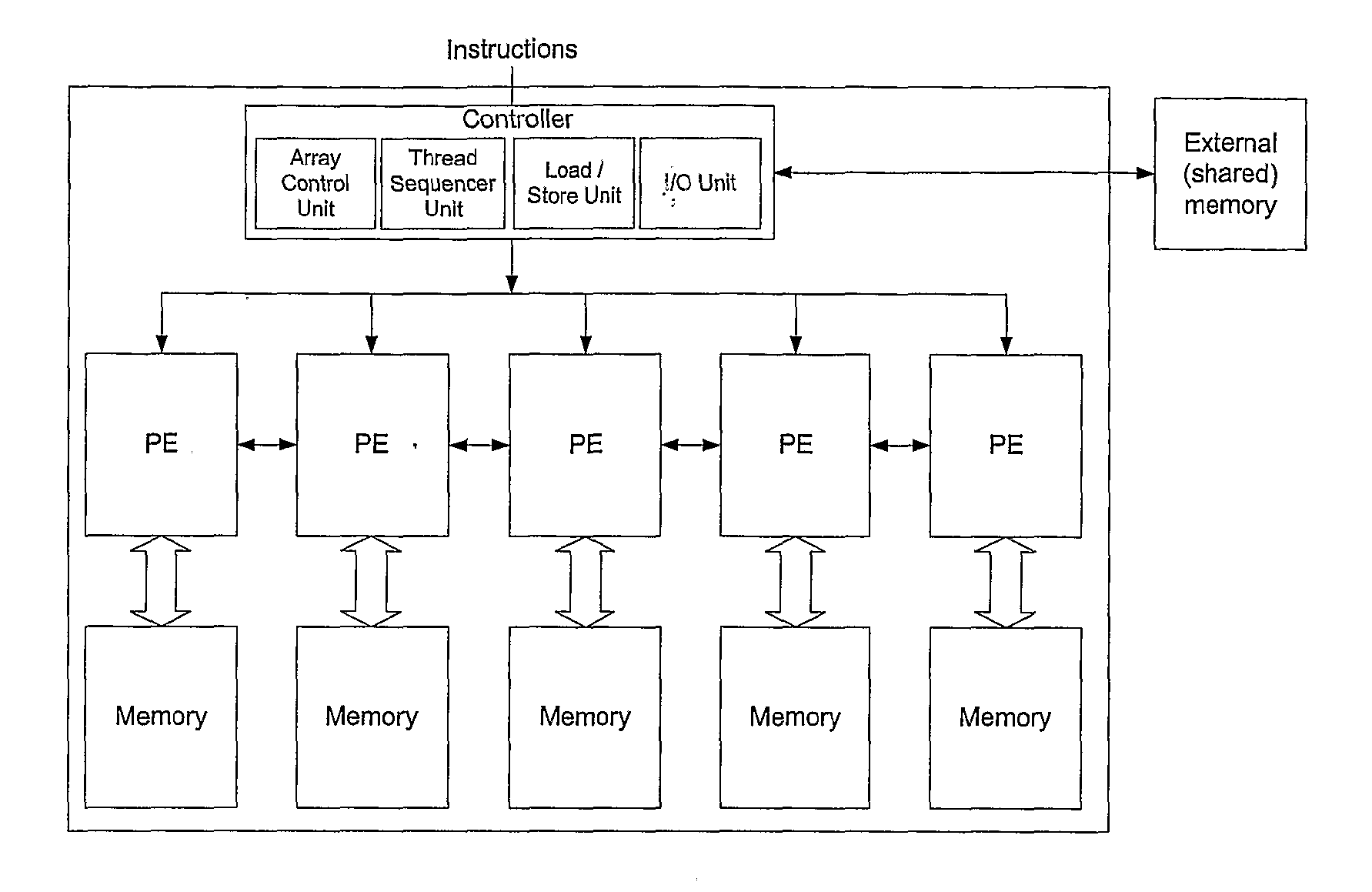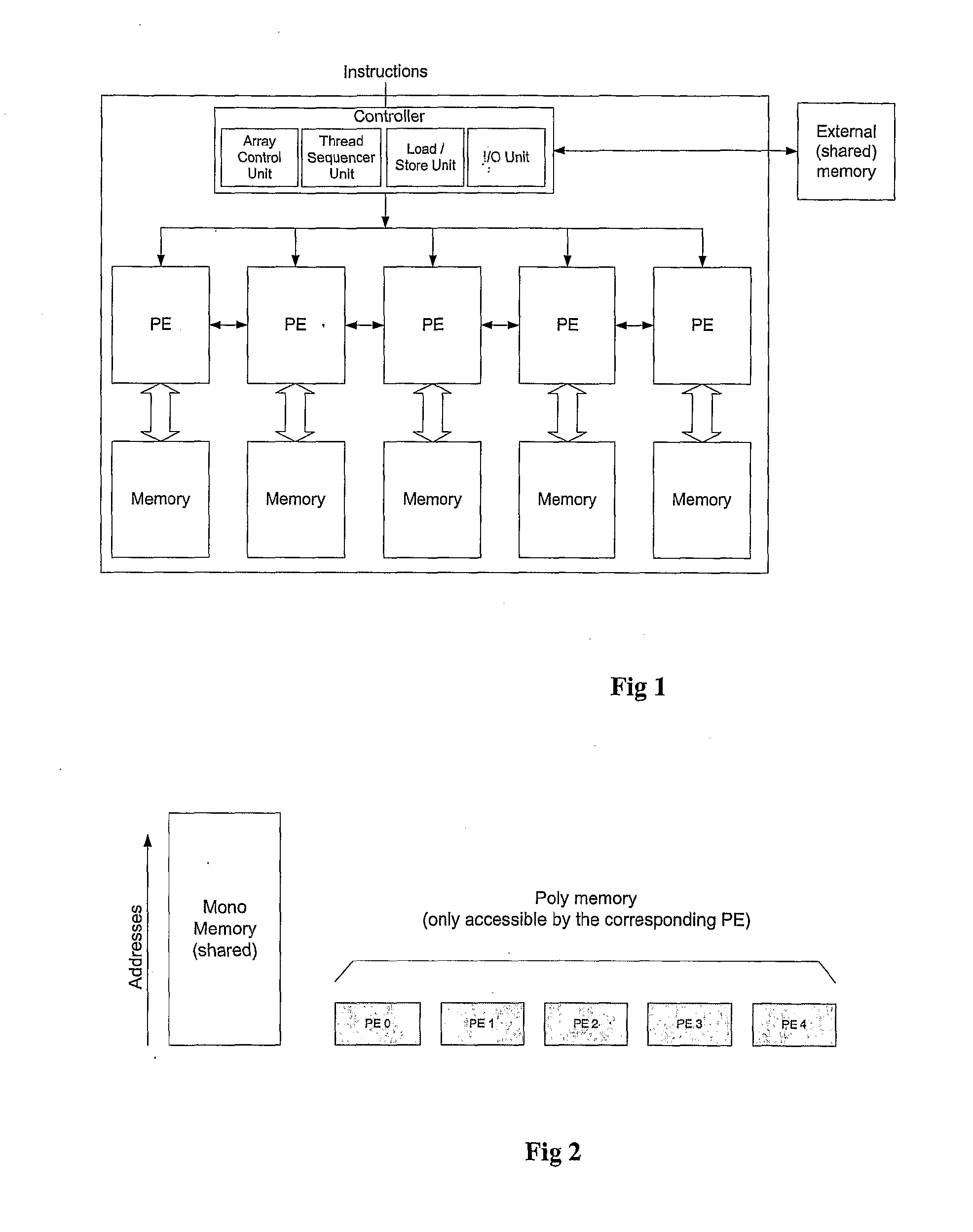Processor memory system
a memory system and processor technology, applied in the field of processor memory systems, can solve the problems of increasing delay and complexity, types of access allowed, etc., and achieve the effects of simplifying inter-processor communication, facilitating compiler optimisation, and simplifying memory usag
- Summary
- Abstract
- Description
- Claims
- Application Information
AI Technical Summary
Benefits of technology
Problems solved by technology
Method used
Image
Examples
Embodiment Construction
[0054]The invention will now be described with reference to the following drawings, in which:
[0055]FIG. 1 illustrates a traditional SIMD architecture;
[0056]FIG. 2 illustrates schematically separate poly and mono memory maps;
[0057]FIG. 3 illustrates schematically an address map for unified memory, showing how to generate shared memory address from PE id and memory address for an example of 2K word memory (11 bit addresses) and 64 PEs (6 bit PE number);
[0058]FIG. 4 shows how to generate shared memory address from PE id and memory address;
[0059]FIG. 5 illustrates an address map for virtualised PE memory;
[0060]FIG. 6 is a schematic diagram of a CCB interconnecting PE memories;
[0061]FIG. 7 illustrates the operation of inter-PE transfers, routing requests between PE registers and memory:
[0062]FIG. 8 illustrates the operation of Concurrent transfers:
[0063]FIG. 9 illustrates an example of the invention using an intermediate end node; and
[0064]FIG. 10 illustrates a shared load / store unit use...
PUM
 Login to View More
Login to View More Abstract
Description
Claims
Application Information
 Login to View More
Login to View More - R&D
- Intellectual Property
- Life Sciences
- Materials
- Tech Scout
- Unparalleled Data Quality
- Higher Quality Content
- 60% Fewer Hallucinations
Browse by: Latest US Patents, China's latest patents, Technical Efficacy Thesaurus, Application Domain, Technology Topic, Popular Technical Reports.
© 2025 PatSnap. All rights reserved.Legal|Privacy policy|Modern Slavery Act Transparency Statement|Sitemap|About US| Contact US: help@patsnap.com



